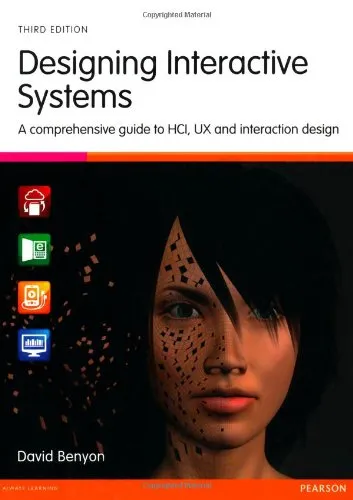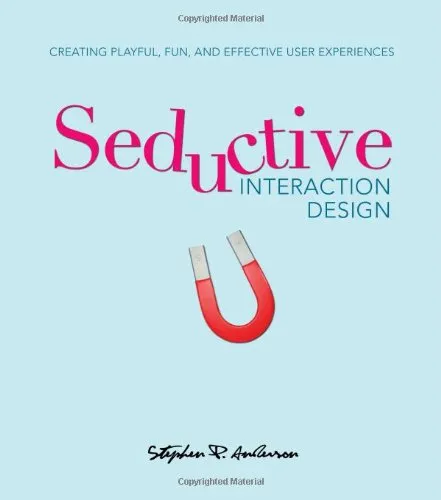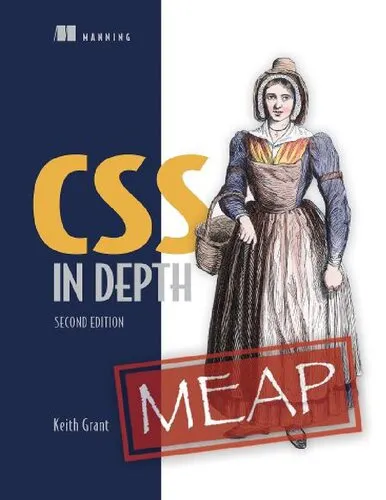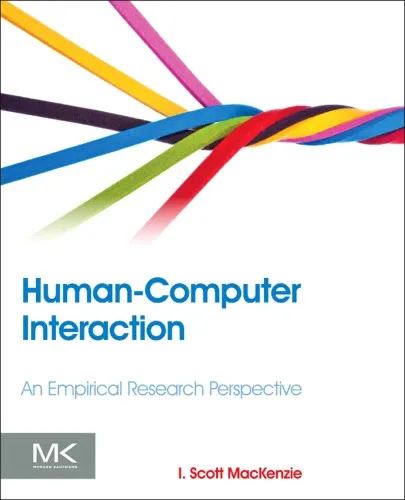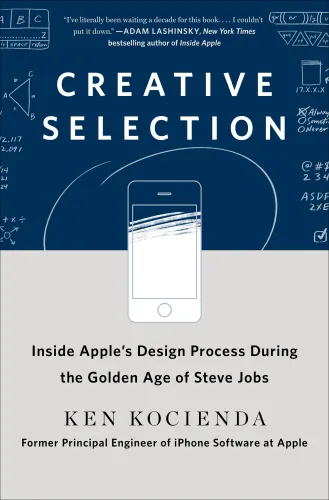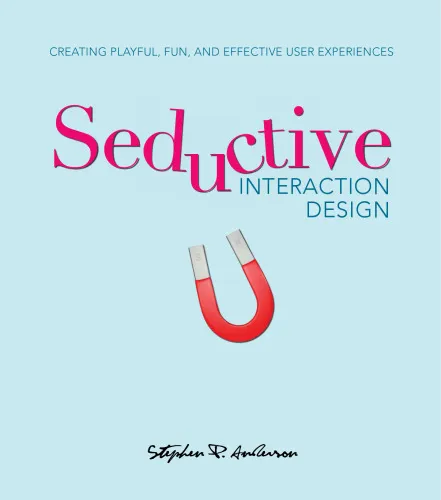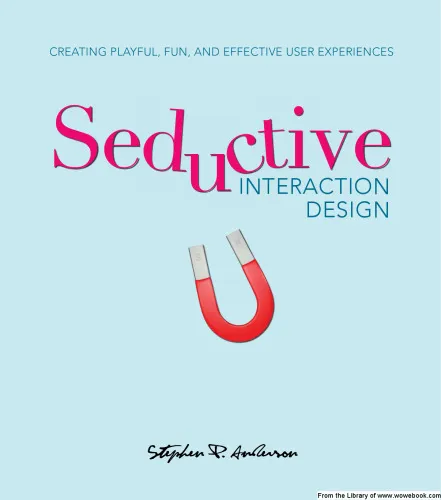Designing Interactive Systems: A Comprehensive Guide to HCI, UX and Interaction Design
4.0
بر اساس نظر کاربران

شما میتونید سوالاتتون در باره کتاب رو از هوش مصنوعیش بعد از ورود بپرسید
هر دانلود یا پرسش از هوش مصنوعی 2 امتیاز لازم دارد، برای بدست آوردن امتیاز رایگان، به صفحه ی راهنمای امتیازات سر بزنید و یک سری کار ارزشمند انجام بدینکتاب های مرتبط:
معرفی کتاب 'Designing Interactive Systems'
کتاب 'Designing Interactive Systems: A Comprehensive Guide to HCI, UX and Interaction Design' نوشته دیوید آر. بنین، یکی از منابع اصلی و جامع در زمینه طراحی سیستمهای تعاملی است. این کتاب بهطور ویژه به بررسی روشها و رویکردهای طراحی تعاملات میپردازد و برای طراحان، پژوهشگران و علاقهمندان به حوزه HCI و UX نوشته شده است.
خلاصهای جامع از کتاب
این کتاب شامل بخشهای متعددی است که هر یک به جنبههای مختلف طراحی سیستمهای تعاملی میپردازند. از جمله موضوعاتی که در این کتاب مورد بررسی قرار گرفتهاند، میتوان به طراحی کاربرمحور، اصلهای طراحی تعامل، و اهمیت Contextual Inquiry اشاره کرد. دیوید بنین با ارائه مثالها و نمودارهای کاربردی، به خواننده کمک میکند تا پیچیدگیهای طراحی را بهتر درک کند و تکنیکهای بهینهسازی تجربه کاربری را بیاموزد.
نکات کلیدی
- تاکید بر اهمیت درک نیازها و اهداف کاربران در طراحی سیستمهای تعاملی
- معرفی روشهای طراحی تجارب کاربری بهعنوان محور اصلی فرآیند طراحی
- ارائه مثالهای کاربردی از پروژههای واقعی بهمنظور تحلیل و بررسی روند طراحی
جملات مشهور از کتاب
«درکی عمیق از این که کاربران چهچیزی نیاز دارند، کلید موفقیت در طراحی سیستمهای تعاملی است.»
چرا این کتاب اهمیت دارد
این کتاب به دلیل جامعیت و کاربردی بودن آن، بهعنوان یکی از منابع مرجع در زمینه HCI و UX شناخته میشود. متدهای معرفیشده در این کتاب، به طراحان کمک میکند تا نیازهای کاربران را بهخوبی شناسایی کنند و محصولاتی با کیفیت بالا تولید کنند. اهمیت دیگر این کتاب در ارائه رویکردهای نوین و موثر در طراحی است که به پژوهشگران و متخصصان این حوزه امکان میدهد تا از تجربیات واقعی و تحقیقات علمی بهرهبرداری کنند.
Welcome to the world of interactive systems design! "Designing Interactive Systems: A Comprehensive Guide to HCI, UX, and Interaction Design" stands as a seminal text in the fields of Human-Computer Interaction (HCI), User Experience (UX), and interaction design. Written by David R. Benyon, this guide explores the nuanced landscape of designing digital products that are not only functional but also exceptionally user-friendly and engaging. Through this comprehensive introduction, you'll gain insights into the structure and core aspects of the book, the focal takeaways, memorable quotes, and the significance of this work in shaping contemporary design philosophy.
Detailed Summary of the Book
"Designing Interactive Systems" serves as a definitive resource for students, educators, and professionals delving into the interdisciplinary domains of HCI, UX, and interaction design. The book is meticulously structured to cover a wide array of topics—beginning with foundational theories, progressing through various design processes and methodologies, and culminating in practical applications and case studies. At its core, the book addresses the dynamic interaction between humans and technology, emphasizing the importance of user-centered design. It introduces essential concepts such as affordances, feedback, constraints, and mapping, while also tackling the intricate tasks of usability evaluation and prototyping.
Benyon integrates theoretical knowledge with practical exercises, ensuring that readers not only understand but can also apply the principles of design thinking to real-world scenarios. The text is filled with illustrative examples and is punctuated with insights from both classical and contemporary scholarship, making it an invaluable guide for anyone committed to crafting better digital experiences.
Key Takeaways
- Understanding the user: Learn the significance of deeply understanding user needs, behaviors, and contexts to design meaningful interactions.
- Design processes: Gain insight into iterative and user-centered design processes that improve the quality and efficiency of design solutions.
- Critical analysis: Develop the ability to critically evaluate existing interactive systems and identify opportunities for enhancement.
- Practical application: Acquire practical skills in conducting usability tests, creating prototypes, and employing design tools effectively.
- Ethical considerations: Explore the ethics of interaction design, focusing on accessibility and inclusivity.
Famous Quotes from the Book
"A designer’s imagination is fueled by seeing the world through the eyes of their users."
"The best interfaces lead to seamless interaction between people and the technology they use."
"Good design is about making complexity simple, not making the simple overly complex."
Why This Book Matters
"Designing Interactive Systems" is more than just a textbook; it is a crucial part of any designer's library. By synthesizing decades of research and practical expertise, David R. Benyon provides a roadmap for creating digital experiences that are intuitive, inclusive, and enriching. As technology continues to evolve, the principles and practices covered in this book remain hugely relevant, shaping the way designers approach interaction design challenges.
For educators, this book offers a comprehensive curriculum foundation. For professionals, it serves as a constant reference to refine and inspire one's practice. In the rapidly growing field of HCI and UX, understanding the human aspects of technology design becomes indispensable. This book empowers its readers to contribute thoughtfully and ethically to the evolving landscape of digital technology.
دانلود رایگان مستقیم
شما میتونید سوالاتتون در باره کتاب رو از هوش مصنوعیش بعد از ورود بپرسید
دسترسی به کتابها از طریق پلتفرمهای قانونی و کتابخانههای عمومی نه تنها از حقوق نویسندگان و ناشران حمایت میکند، بلکه به پایداری فرهنگ کتابخوانی نیز کمک میرساند. پیش از دانلود، لحظهای به بررسی این گزینهها فکر کنید.
این کتاب رو در پلتفرم های دیگه ببینید
WorldCat به شما کمک میکنه تا کتاب ها رو در کتابخانه های سراسر دنیا پیدا کنید
امتیازها، نظرات تخصصی و صحبت ها درباره کتاب را در Goodreads ببینید
کتابهای کمیاب یا دست دوم را در AbeBooks پیدا کنید و بخرید
1535
بازدید4.0
امتیاز0
نظر98%
رضایتنظرات:
4.0
بر اساس 0 نظر کاربران
Questions & Answers
Ask questions about this book or help others by answering
No questions yet. Be the first to ask!
